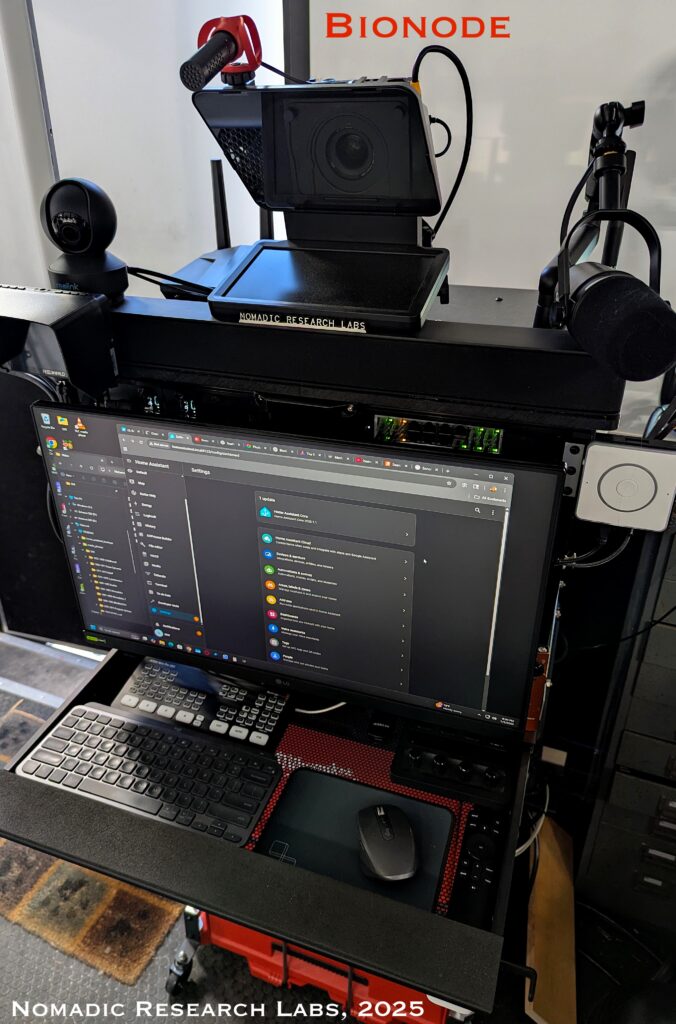
Meet Bionode
A Mobile Lab on a Hand Truck
by Steven K. Roberts
Nomadic Research Labs
Introducing a self-sufficient information toolkit on wheels… with 14TB of NAS, video and audio production, sensor suite, security, communications, embedded AI, on-board power with solar charging, PC/Mac/Linux development systems, and mesh networking.
Background
I seem to have made a career of putting computers on wheels, starting with the Winnebiko in 1983. As the first “digital nomad,” I pedaled three versions of this 17,000 miles around the United States, writing a book called Computing Across America that is now being serialized on Substack. The bike evolved into a mad contraption with binary handlebar keyboard and extensive computing resources, culminating in BEHEMOTH — a 105-speed unixcycle that is now in the Computer History Museum.
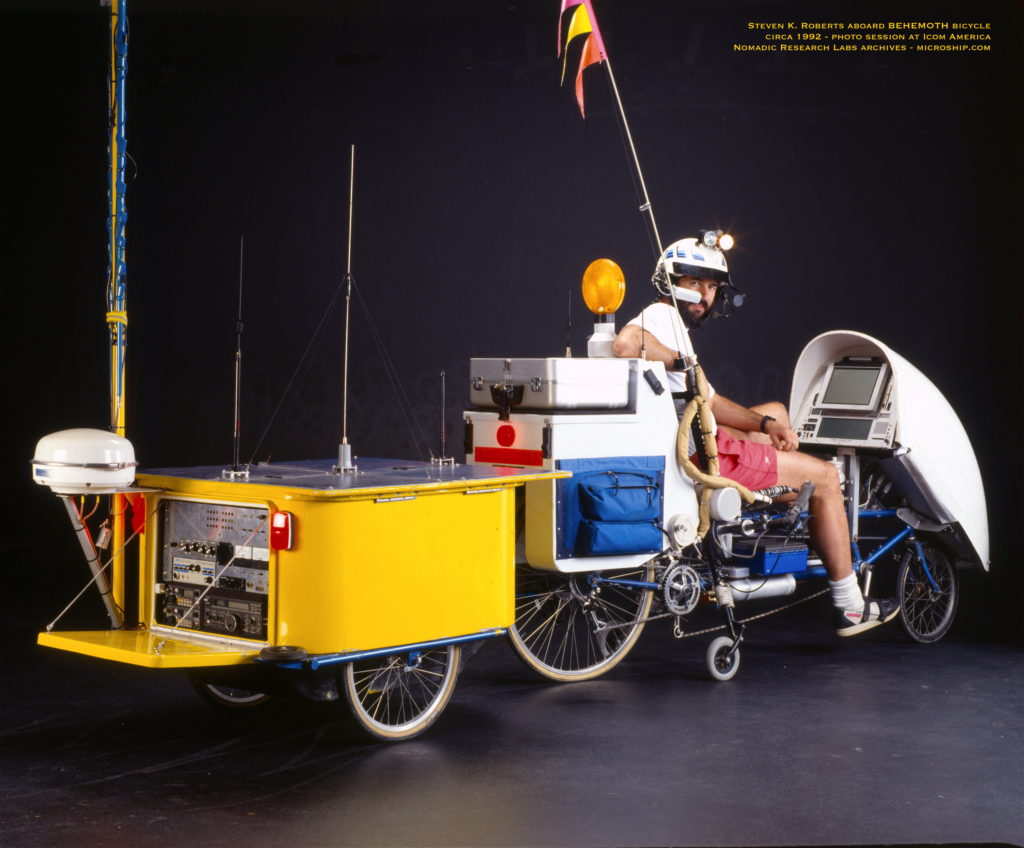
Through the ’90s, I ported this concept to water, yielding an amphibian pedal/solar/sail micro-trimaran called Microship. In 2006, I moved to a sailboat of cruising scale, spent years building nautical geekery, then crossed over to the Dark Side with a big honkin’ power boat that never gets off the dock. Now, in my seventies, I spend my days in a 48-foot mobile media lab where I do digitizing for clients…
This new project incorporates my essential tech into a portable package… a geek survival-kit that encapsulates all information systems into a single module. Bionode is the result — a networked collection of systems with a stable power environment, AI, sensor suite, huge storage, multiple communications modes, and video production tools… all built into a hand truck.
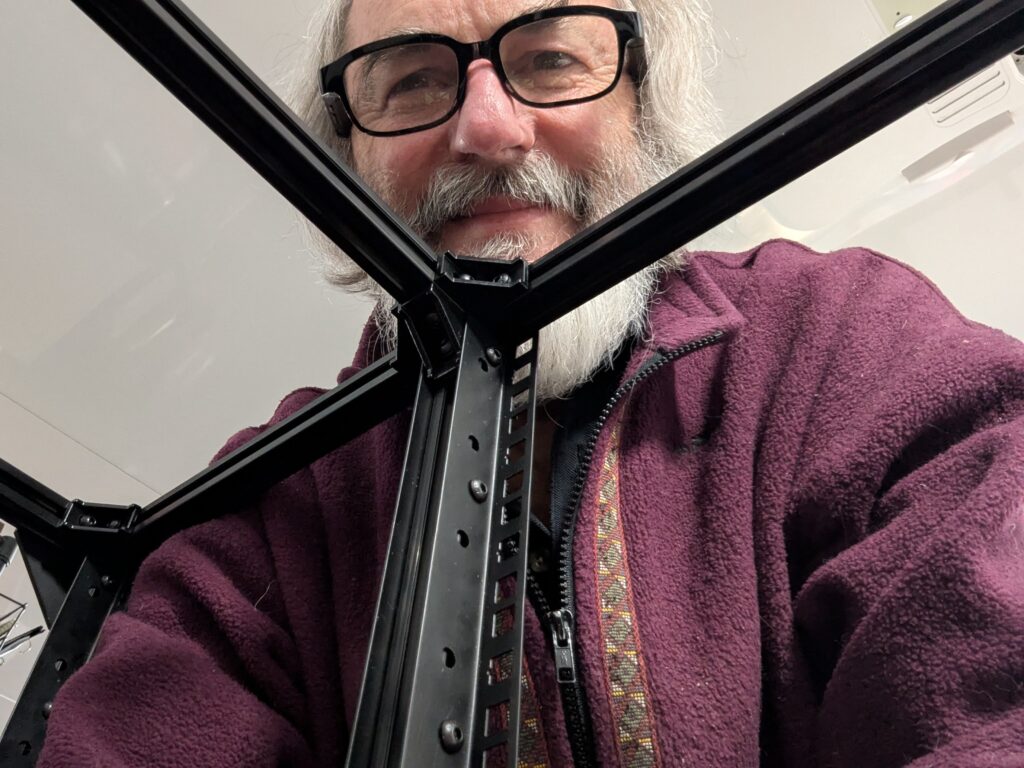
Bionode Packaging
There has been a welcome movement in recent years involving “minilabs” for home use, based on an emerging 10-inch rack-mount standard instead of the traditional 19-inch units that go back to the black-crackle forties. I’ve lived with the latter all my life, and the mini-rack form factor is a svelte, refreshing packaging style that better reflects the miniaturization of our technological tools. There is a lively community on Reddit (65K members at this writing), including a few folks who have really shaped the field (see resources on that page). There is also a huge resource of downloadable 3D printer files on Printables and Thingiverse…
As this system started taking shape in my head, I realized that, like my aptly named BEHEMOTH, it was going to be hard to fit everything in. Even a tall rack was going to be a challenge with all I wanted to do, so I decided to make a doublewide. I used 2020 extrusion and stock connectors to build the frame, with four 8U bays (cage nuts rails shown are what became the rear; my 10-32 rails for the front had not yet arrived at the time of this photo):

From the start, I wanted an integrated UPS to keep power stable, but incorporating that into the rack would have gobbled precious real estate. With that, and the need for on-board storage (laptop, cabling, tools, documentation) I decided to integrate this into a portable cabinet. That would become unmanageable if it didn’t have wheels… so I dove into the deep rabbit hole of toolbox systems and chose the well-supported and readily available Packout product line from Milwaukee:
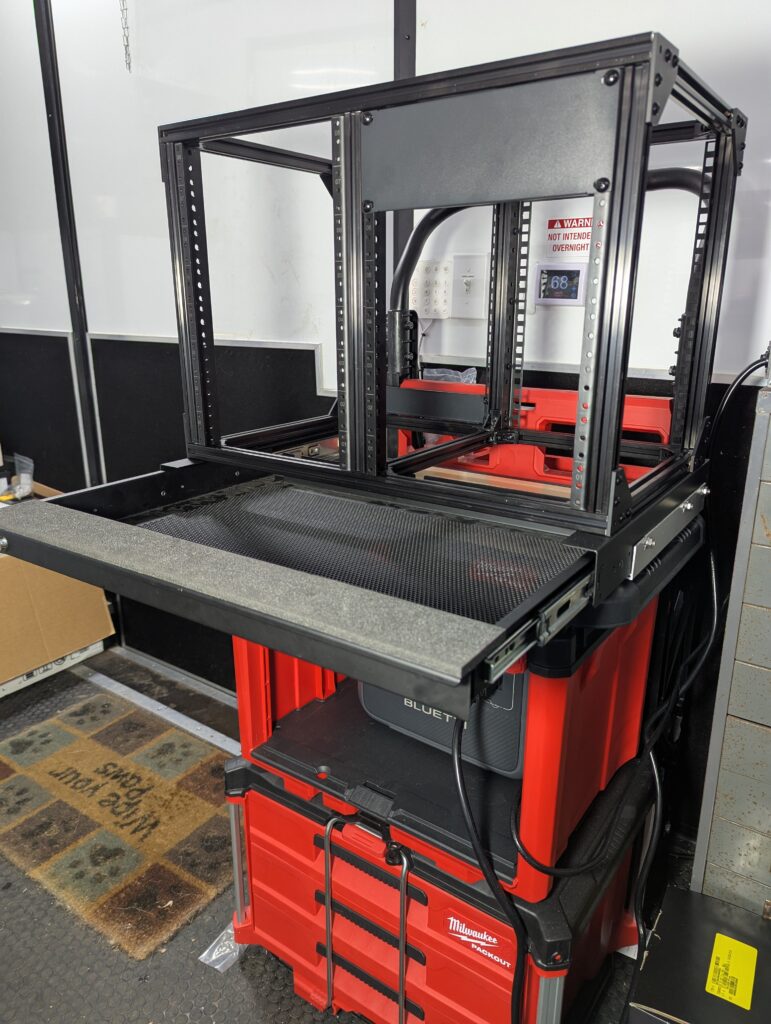
This involved some trickery… it was clear that I was going to need a keyboard drawer. I bought a Packout desktop to give me a nice wood surface, then built framing to integrate that Penn Elcom drawer into the support system. If you look just below it, you can see the Bluetti AC70 power system in the cabinet… not exactly a UPS (no NUT or NAS support and no Home Assistant integration since they added encryption to their BLE connection) but still a sweet and well-scaled (768 watt-hour) rig for my anticipated loads, including solar charge capability.
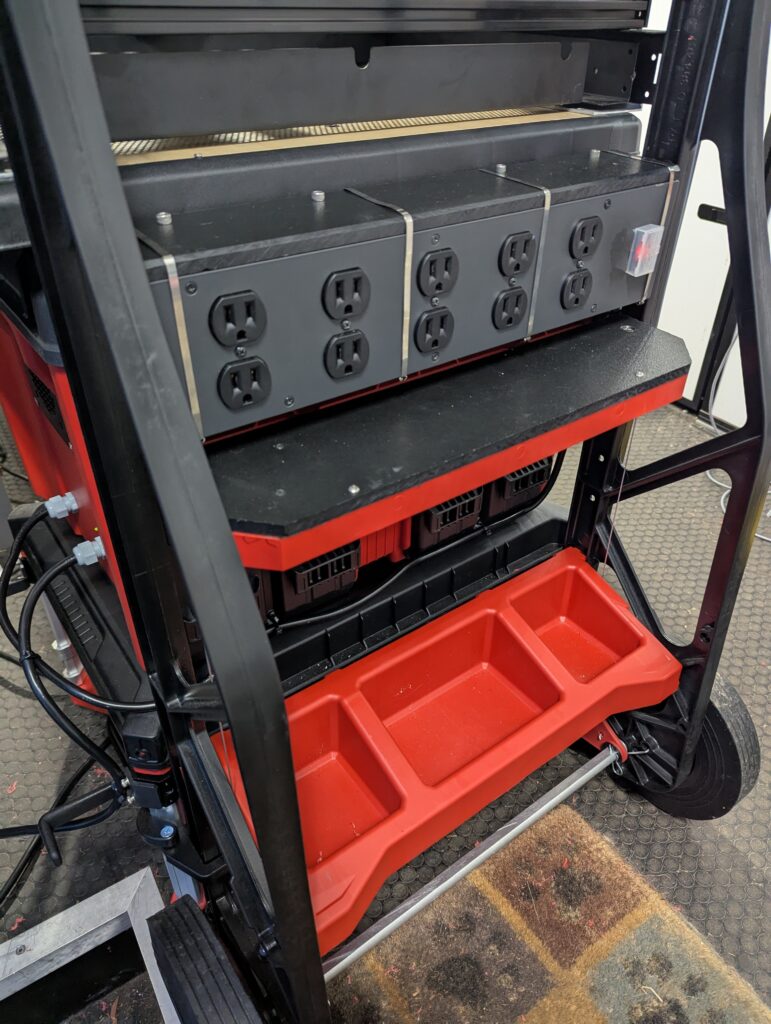
This machine was taking over a corner of my lab and spawning a shelf full of gizmos, some of which are mounted on the hinged HDPE roof… router with antennas, a Shure studio mic on its arm, camera with prompter, keylight, PTZ security cam, soundbar, exit fans for the compute stack, and sensor module.
It was time to get busy on the geeky bits. Given the limitations of space, a single local console (keyboard, video, mouse) has to be shared except in situations when devices run headless and can be managed with SSH or a web interface. In my case, there are a few things that don’t fit that model, so I got a bit carried away:
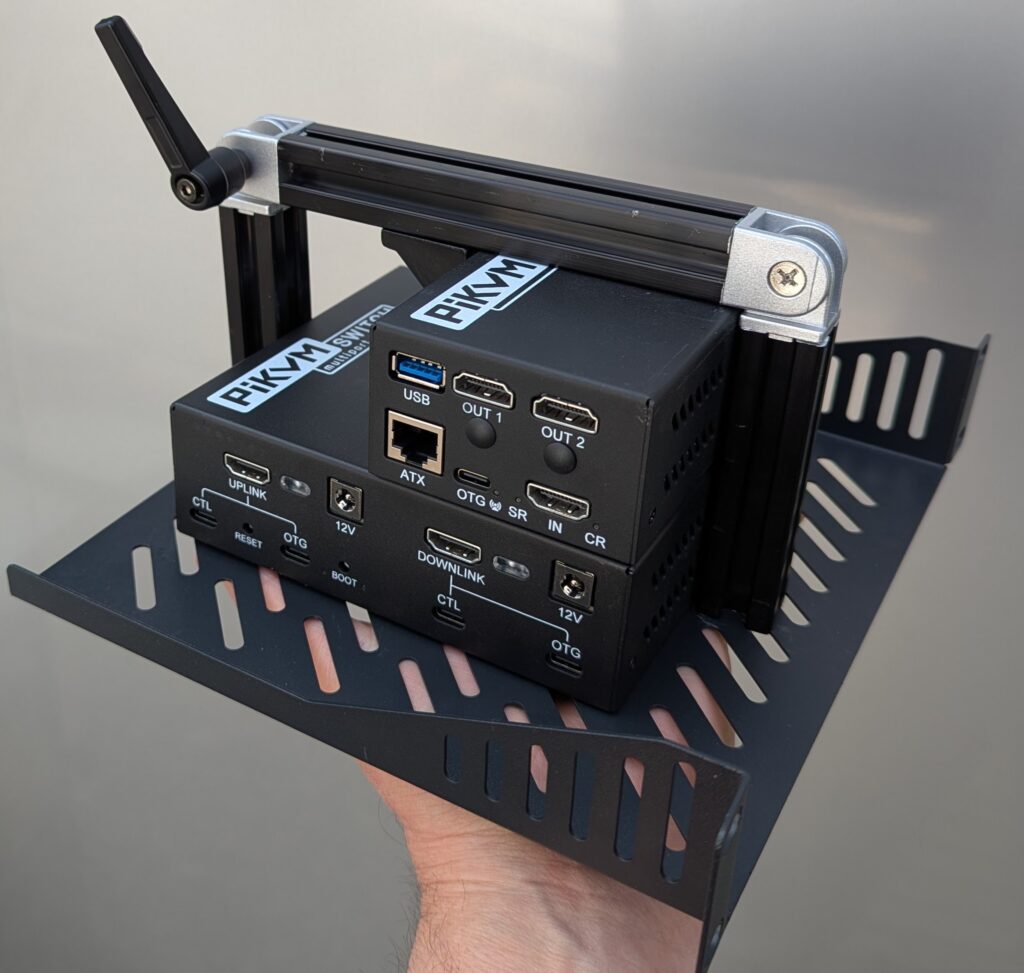
Unable to find an elegant solution to rack-mounting this, I kluged a clamping system with the ubiquitous 2020 extrusion, and it has survived the test of cabling (though that silly lever is history). But the bigger problem with this unit was that it is complicated for a stand-alone home system instead of the remote data center management at which it excels. I wanted a way to have local console natively connect to the PC without having to fire up an external machine on the LAN and SSH into this device to basically throw a switch. So… in the spirit of this quick teaser tour of Bionodal innards…
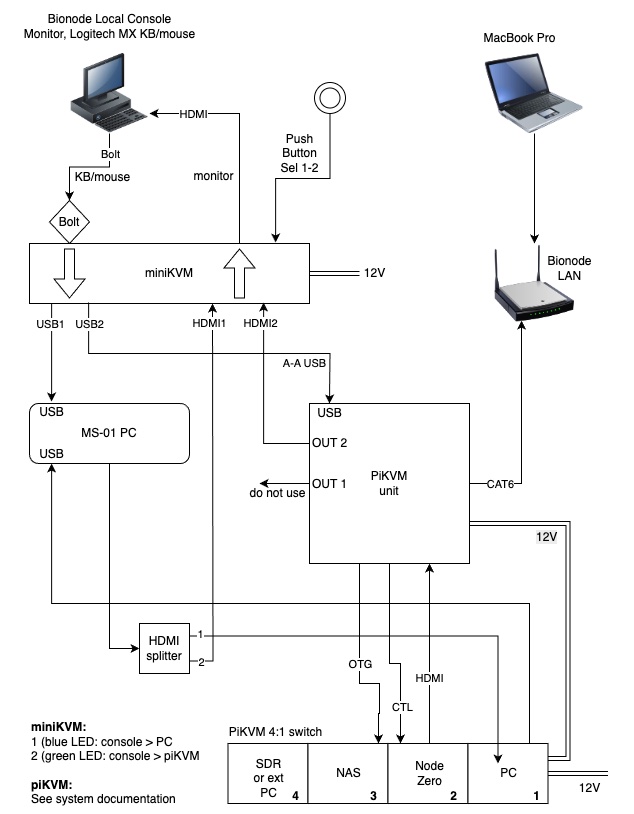
I include this here in the intro to show the documentation standard — every device has a chapter in the Scrivener manual, with sketches done in draw.io. This design uses a cheapie miniKVM from Amazon to let me toggle the console between PC and the professional KVM, which can then do all those things that make it so expensive… and which have even turned out to be somewhat handy on occasion. (Its ATX capability would seem irrelevant here, but it is just “bits” so we can think of it as an extra control and sensing pipe if I need to remotely yank a chain).
Computers
Speaking of systems, Bionode currently contains a Minisforum PC with GPU (for local AI and Immich machine learning tasks), TrueNAS installed on a Terramaster F8 with 14TB of M.2 SSD for all the archives and Docker containers, a NUC running Ubuntu, a Pi5 with 1TB for Home Assistant, an identical Pi5 with native OS for dev, an older Pi3 devoted to running the 3D printer, and a Pi4 for SDR applications. (It kind of blows my paleogeek mind that I can casually mention “Raspberry Pi with 1 terabyte” without so much as a giggle.) Hanging off the router is a Unifi 16-port managed switch, along with a few little ESP32 boards and other nodes around… and there are backup protocols involving external HD cold storage along with my big lab NAS.
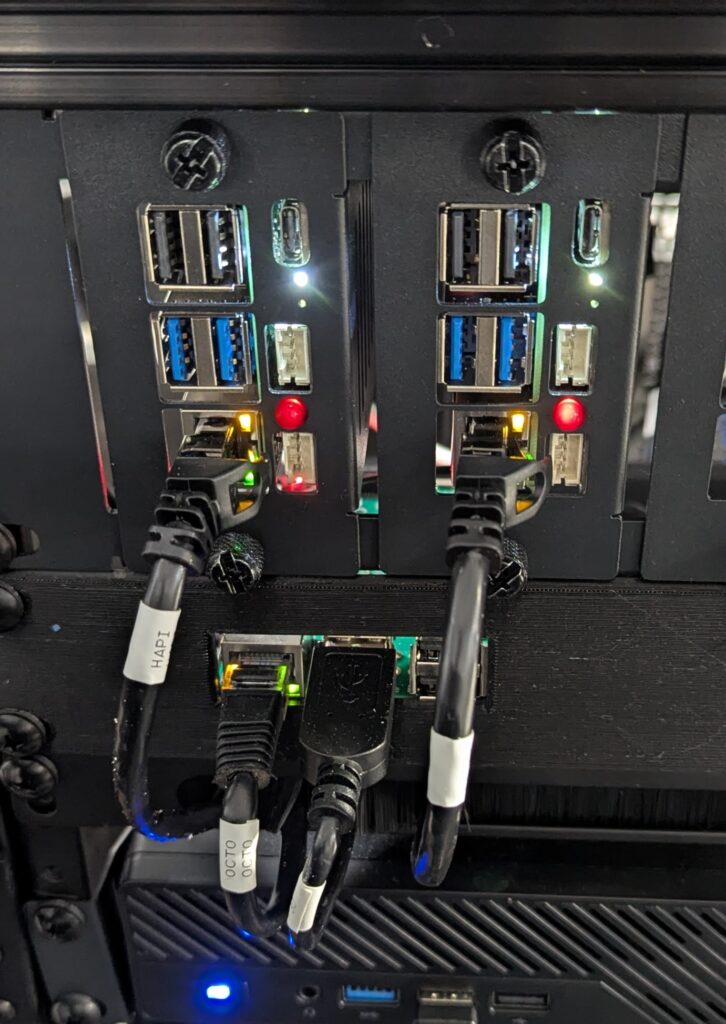
The machines are on the left half of the enclosure, in a configuration that is designed to optimize airflow. Convection helps elevate exhaust from the MS-01 when its GPU is cranking, and the F8 NAS is blowing vertically anyway (over some nice heat sinks I installed with 3D-printed clips instead of the provided rubber bands that scared me). The roof has two fans, one of which exhausts up to the bottom of the Flint router that can reportedly get hot at times. Spill from this speeds the response of an AIR-1 from Apollo, part of the Home Assistant installation that gives me excellent air quality and other sensor data.
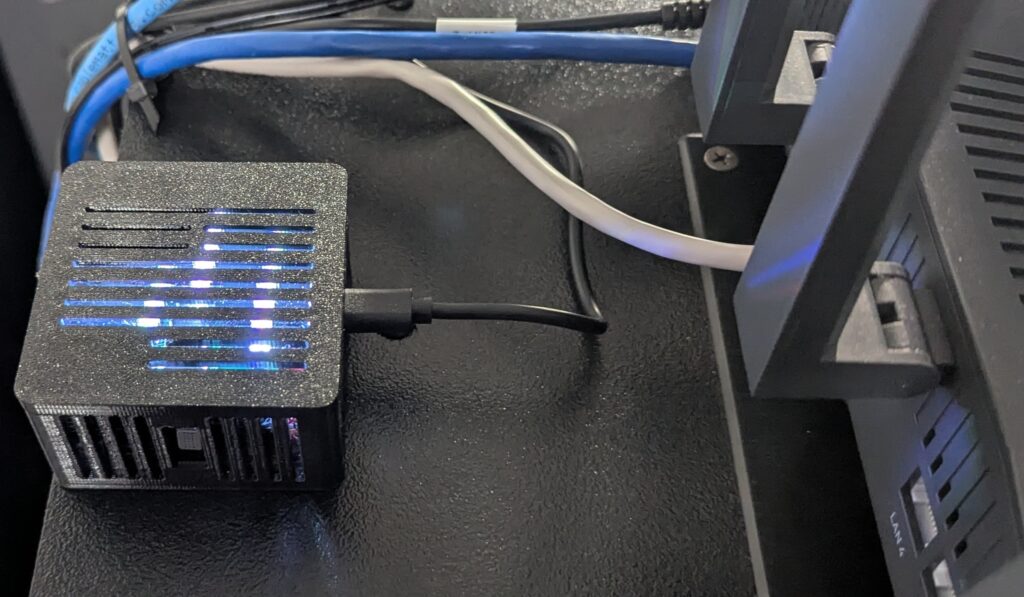
One of the fun things about all this, which probably sounds like a haphazard combination of unrelated tools compared to some of the sleek media servers and dev systems I’ve seen in minilab and homelab communities, is that we are starting to see synergy among machines. The Whisper/Piper voice (Nabu) is stitched to local AI, and I confess secret delight when one of my silly automations pipes up after guests leave and observes “ah, the air is getting much better in here!” (CO2 dropped below 550). It is aware of relevant temperatures including power bay and most CPUs, NAS performance, status of all drawers and access panels, human presence detectors, and so on… HA is the Bionode’s nervous system, not the classic “home control” running nearby lights, as there is another installation in the lab running in Proxmox to do that. Immich manages my photo archives under TrueNAS, a marathon of learning curves, but it works and we’re now using the GPU to handle face recognition tasks as I continue importing archive boluses of a thousand or so at a time as I get up the nerve to try Google Takeout. This combination of tools will also be handling my original software development objectives for the system, and I’m already getting a sense of cooperative interoperability.
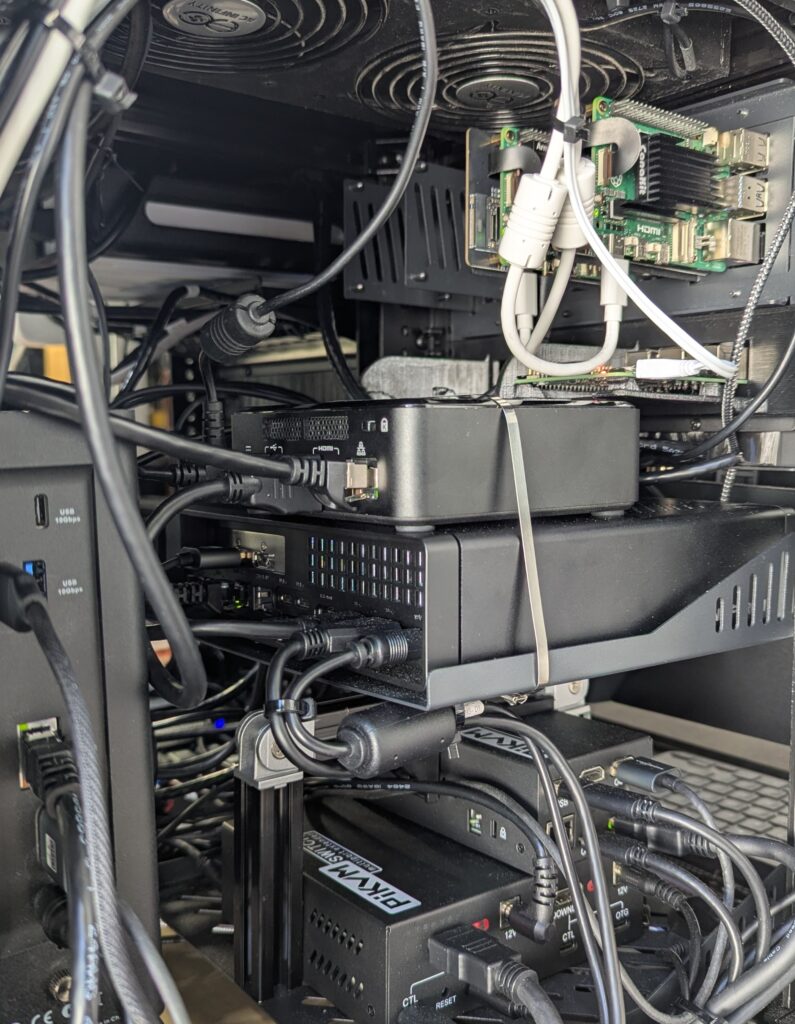
Video System
I mentioned the production suite for video projects, though the hinged 24-inch monitor that snaps magnetically in place in front of the rack is not great for DaVinci Resolve compared to the larger ones I’m used to. Also, I am mostly a Mac user, yet the “big iron” in Bionode is a PC. What to do?
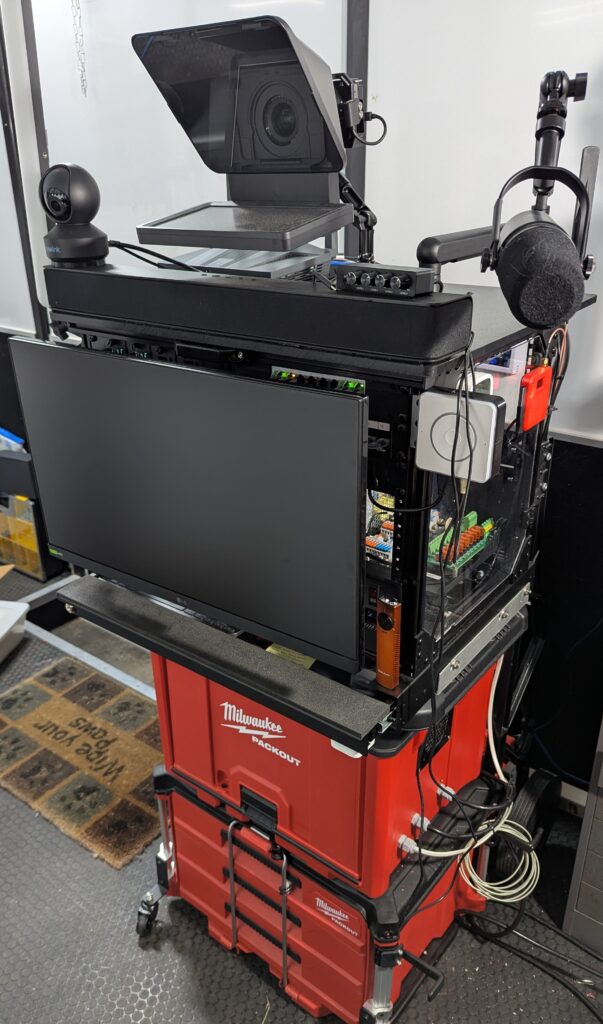
For a while I was sure the solution would be an M4 Mac Mini in 3D-printed rackmount, and I wanted a good excuse to buy one for that AI-friendly unified memory. But when I started realizing how often I need an external laptop to poke at the PiKVM (and how Macs don’t really like to have their consoles switched) I realized that the more practical solution is to keep a MacBook Pro around… doubling console space and linked via Tailscale.
But wait, the point of this thing is to have all my gizmos on one device with wheels… does it also need an adjacent computer desk? Actually, no… I am installing a swing-out support arm for the laptop, which otherwise lives in one of the Packout drawers. This will own the MOTU audio interface as well as the ATEM for video production and related tools (OBS), and the Prompter does double-duty as a Zoom station.
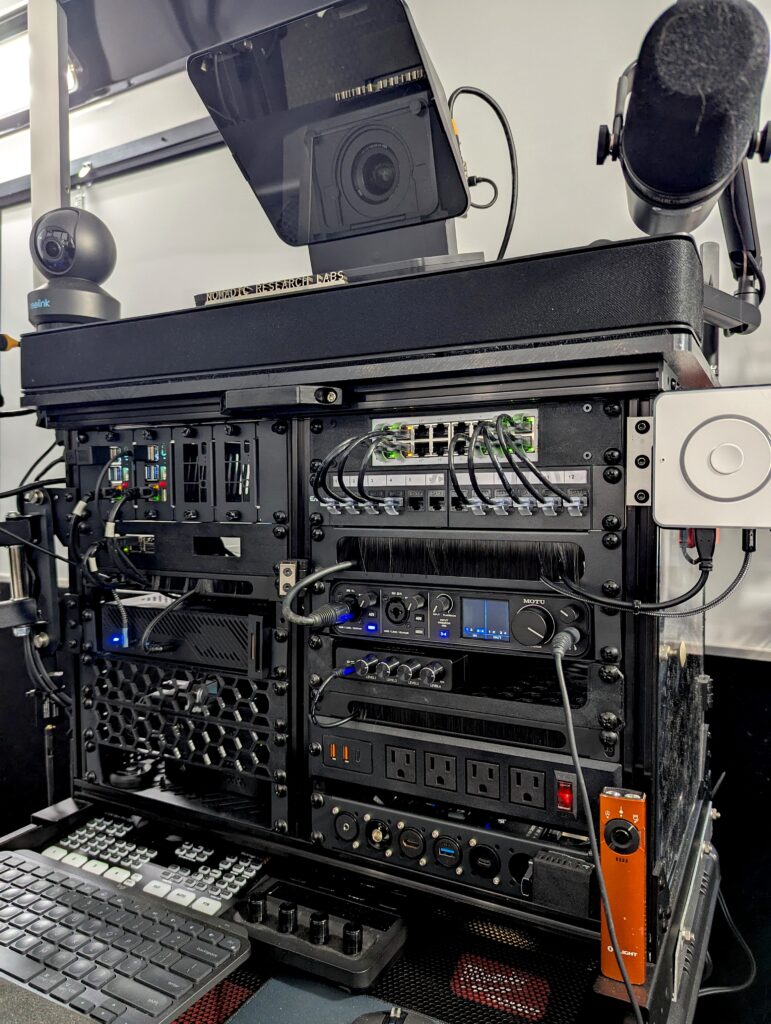
Communications
In addition to network communications, I’ve been a ham for most of my life (N4RVE) and have a deep fondness for radio. All network-enabled comms will be integrated into Bionode, and I am adapting my existing full-size 12U radio rack onto a simpler hand-truck substrate for traditional radio gear (with others coming for electronics lab equipment, 3D printing, solder/fab station, media digitizing tools, book scanner, copy stand, and so on). This fleet of similarly scaled mobile units will then allow ad-hoc assembly of lab configurations.
There are some interesting bits of radio geekery in this machine. Meshtastic is essential these days if you want a secure pipe between people without having to involve the Internet; it self-organizes into a mesh if the density of stations is sufficient, and is also a great way to pass notifications and low-bandwidth sensor data (using MQTT) as long as you keep it from spilling onto public channels.
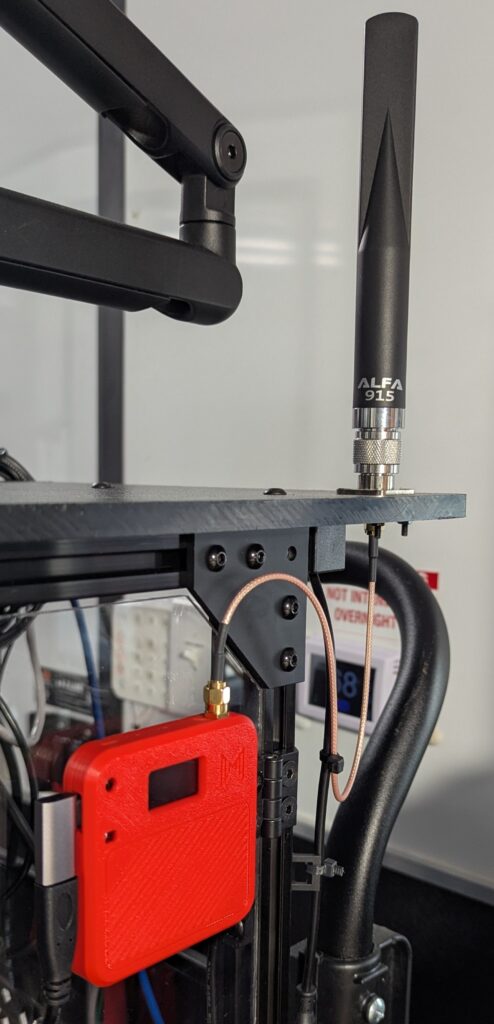
I know, I’m a glutton for geekery… one good thing about this rolling substrate is that it is intrinsically space-limited (with a hard spec of being able to fit through a typical interior doorway of 32″). But we can do so much with tiny things these days that it’s hardly a constraint!
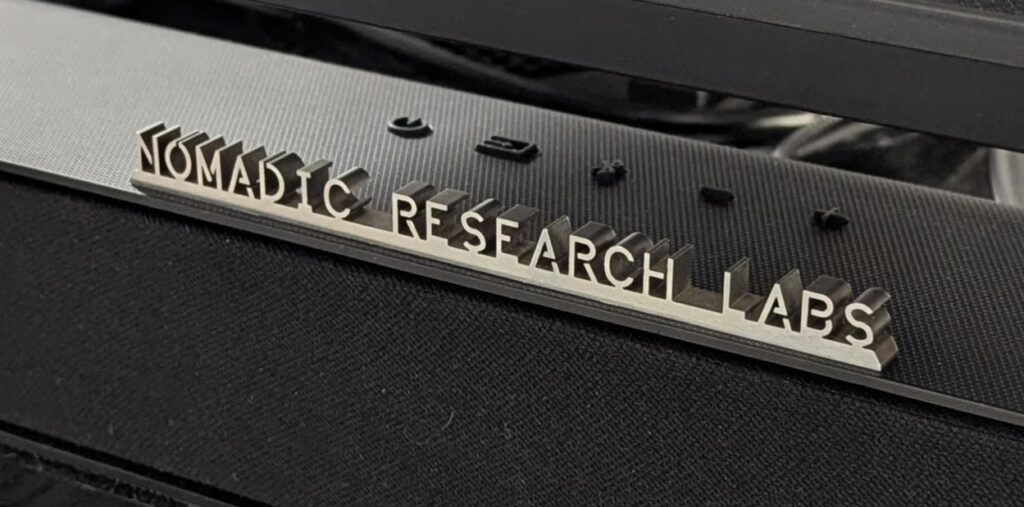
Where to from here?
I’m on a mad push to get packaging done and cables dressed so focus can shift to software and applications… it’s been 4.5 months since I started this project, and I only brought the NAS up a couple of weeks ago. One of the main practical goals is to use this to isolate my extensive archives from the complexity of the digitizing lab, where I have 180TB of NAS and multiple computers. If I sell the business or shut it down, the personal mess would be daunting; if that happens after I shuffle off this mortal coil, it would be messier still. The Bionode modularizes my information life while being a cognitive prosthesis for an aging brain, as well as an information toolkit that provides powerful self-sufficiency in a geek variant of the prepper ethos. This is the thing I would grab first…
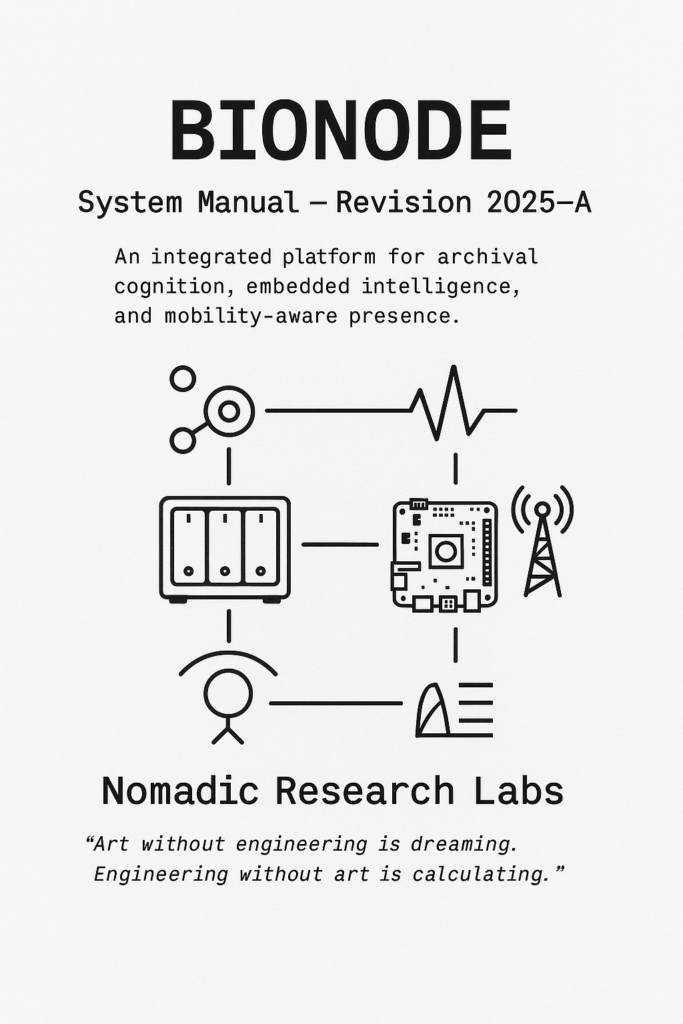

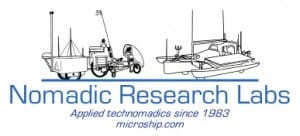
You must be logged in to post a comment.